Archive for April, 2013
» posted on Monday, April 29th, 2013 by Linda Lou Burton
Not To Brag
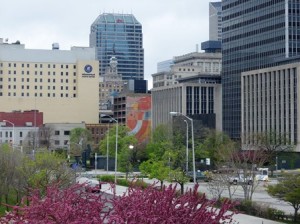 Linda Burton posting from Indianapolis, Indiana – Cherry trees? I’m not sure about the small grove of brilliant pink just below my hotel window in a tiny pocket park, but they are full-bloomed out and looking fine today. Across the street the trees need a few more days of sun, although the grass below is high; a city groundskeeper is circling each tree with his mowing machine. I’m looking straight into downtown Indianapolis, the second-largest of the 50 capital cities with a population of 829,718 (US Census 2010). And I’m reading the Indy Visitor Guide, trying to get my bearings and make a plan. I’m just five blocks from the State Capitol, straight down Washington Street; and I can see the top of the monument in Monument Circle tucked between tall buildings, just two blocks away. Very cool. The cover of the Spring/Summer
Linda Burton posting from Indianapolis, Indiana – Cherry trees? I’m not sure about the small grove of brilliant pink just below my hotel window in a tiny pocket park, but they are full-bloomed out and looking fine today. Across the street the trees need a few more days of sun, although the grass below is high; a city groundskeeper is circling each tree with his mowing machine. I’m looking straight into downtown Indianapolis, the second-largest of the 50 capital cities with a population of 829,718 (US Census 2010). And I’m reading the Indy Visitor Guide, trying to get my bearings and make a plan. I’m just five blocks from the State Capitol, straight down Washington Street; and I can see the top of the monument in Monument Circle tucked between tall buildings, just two blocks away. Very cool. The cover of the Spring/Summer 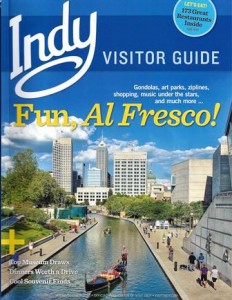 2013 version of Visit Indy surprises me – a gondolier in a black and white striped shirt guiding a gondola on a canal? Am I in Venice, or the middle of the USA? But that’s what it promises: gondolas, art parks, ziplines, shopping, music, and more. Let’s Eat! it implores. 173 Great Restaurants! The Indy 500 is all I really know about Indianapolis; Visit Indy tells me that 400,000 people attend the various races at the Speedway every year. But get this – 22 million people visit the city every year (that averages out to 60,000 people a day). And no wonder so many people come to Indianapolis – 50% of the population of the United States lives within an 8-hour drive! This is serious tourism bragging going on, well, I guess I’d brag too over such impressive numbers. I keep reading. » read more
2013 version of Visit Indy surprises me – a gondolier in a black and white striped shirt guiding a gondola on a canal? Am I in Venice, or the middle of the USA? But that’s what it promises: gondolas, art parks, ziplines, shopping, music, and more. Let’s Eat! it implores. 173 Great Restaurants! The Indy 500 is all I really know about Indianapolis; Visit Indy tells me that 400,000 people attend the various races at the Speedway every year. But get this – 22 million people visit the city every year (that averages out to 60,000 people a day). And no wonder so many people come to Indianapolis – 50% of the population of the United States lives within an 8-hour drive! This is serious tourism bragging going on, well, I guess I’d brag too over such impressive numbers. I keep reading. » read more
» posted on Tuesday, April 23rd, 2013 by Linda Lou Burton
Ghosts On The Hill
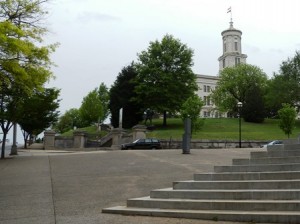 Linda Burton posting from Nashville, Tennessee – The couple behind was panting even more than me. There was a steep hillclimb to get to the capitol entry point and the closest parking was blocks away in an expensive high-rise garage. I passed THP scrutiny and received my entry pass but needed to catch my breath; I watched as the Tennessee Highway Patrol guard at the tunnel door went through his routine again. He opened the woman’s bag and searched it; he photocopied their photo ID and entered their names into his database. Finally issued passes,
Linda Burton posting from Nashville, Tennessee – The couple behind was panting even more than me. There was a steep hillclimb to get to the capitol entry point and the closest parking was blocks away in an expensive high-rise garage. I passed THP scrutiny and received my entry pass but needed to catch my breath; I watched as the Tennessee Highway Patrol guard at the tunnel door went through his routine again. He opened the woman’s bag and searched it; he photocopied their photo ID and entered their names into his database. Finally issued passes, 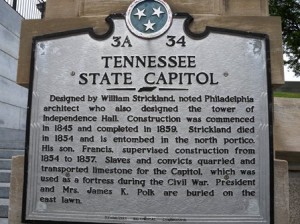 they were allowed to walk through Xray, and given directions to the elevator. “That’s not very welcoming,” I commented to the officer, noting his name on his badge and adding “Mike,” to my sentence, aiming for a friendly tone. “Why do you require photo ID before allowing people to visit their state capitol? I haven’t seen that anywhere before.” Mike shook his head in a kind of apology. “We’ve had so many threats,” he answered. “We check names against our database of people who are considered dangerous and not allowed in.” We chatted a while, discussing the fine line between “openness” and “safety” with regard to public buildings in this day and age. The Tennessee State Capitol is a treasure, to be sure,
they were allowed to walk through Xray, and given directions to the elevator. “That’s not very welcoming,” I commented to the officer, noting his name on his badge and adding “Mike,” to my sentence, aiming for a friendly tone. “Why do you require photo ID before allowing people to visit their state capitol? I haven’t seen that anywhere before.” Mike shook his head in a kind of apology. “We’ve had so many threats,” he answered. “We check names against our database of people who are considered dangerous and not allowed in.” We chatted a while, discussing the fine line between “openness” and “safety” with regard to public buildings in this day and age. The Tennessee State Capitol is a treasure, to be sure, 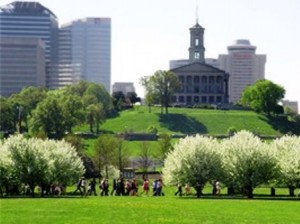 filled with historic moments and memories; it even serves as the final resting place of its architect William Strickland, who is buried in the northeast corner. Though sitting high atop a hill, the building is dwarfed today by the city that has grown up around it; skyscrapers and congested streets almost edge out the feel of history. But I’d come to see; I said goodbye to Mike and headed down the hall, my photo-pass stuck to my shirt. » read more
filled with historic moments and memories; it even serves as the final resting place of its architect William Strickland, who is buried in the northeast corner. Though sitting high atop a hill, the building is dwarfed today by the city that has grown up around it; skyscrapers and congested streets almost edge out the feel of history. But I’d come to see; I said goodbye to Mike and headed down the hall, my photo-pass stuck to my shirt. » read more
» posted on Sunday, April 21st, 2013 by Linda Lou Burton
Leave As Friends
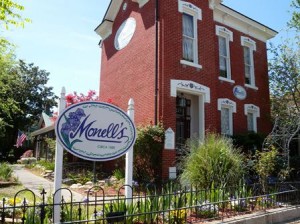 Linda Burton posting from Nashville, Tennessee – “Enter as strangers, leave as friends.” That’s what happens when you gather round the dining table and start passing the peas. And the mashed potatoes, and meatloaf, and all the other goodies that grace the table. I was sitting in Monell’s, a family style restaurant in a historic 1880’s house in Germantown, a north Nashville neighborhood. Baskets of corn muffins, pitchers of sweet tea; pass to the left, please; you can’t help it, you start to chat. “My husband died in February,” said Sandra, on my left. “My son brought me out for
Linda Burton posting from Nashville, Tennessee – “Enter as strangers, leave as friends.” That’s what happens when you gather round the dining table and start passing the peas. And the mashed potatoes, and meatloaf, and all the other goodies that grace the table. I was sitting in Monell’s, a family style restaurant in a historic 1880’s house in Germantown, a north Nashville neighborhood. Baskets of corn muffins, pitchers of sweet tea; pass to the left, please; you can’t help it, you start to chat. “My husband died in February,” said Sandra, on my left. “My son brought me out for 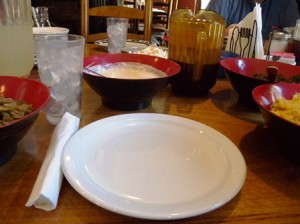 lunch today.” Terrance nodded, “We’re walking in the park after lunch,” he said, “I’ve lost almost a hundred pounds in the last year.” He pulled out his cellphone to show a picture of his former self; his mother and I lavished him with praise. On my right sat Allison and Matt; Matt directs a local TV show and gave me the scoop on the Nashville scene; in turn they wanted to know absolutely everything about the Journey. A month’s worth of friendliness, over chicken and dumplings; where can you find that, except when sharing a meal? No fast food hurry up, just take your time and talk. Family dining, the old-fashioned way. Monell’s was my Saturday treat; today I headed far out in the country to the
lunch today.” Terrance nodded, “We’re walking in the park after lunch,” he said, “I’ve lost almost a hundred pounds in the last year.” He pulled out his cellphone to show a picture of his former self; his mother and I lavished him with praise. On my right sat Allison and Matt; Matt directs a local TV show and gave me the scoop on the Nashville scene; in turn they wanted to know absolutely everything about the Journey. A month’s worth of friendliness, over chicken and dumplings; where can you find that, except when sharing a meal? No fast food hurry up, just take your time and talk. Family dining, the old-fashioned way. Monell’s was my Saturday treat; today I headed far out in the country to the  famed Loveless Café for Sunday brunch. Willard Scott claimed the Loveless has the “world’s greatest scratch biscuits” and Martha Stewart said it was “the best breakfast I ever had.” But the reality of the Loveless popularity really hit when I wound up in the unpaved parking lot on the far end of the property. Hundreds of biscuit-hungry folks were already waiting to be fed. » read more
famed Loveless Café for Sunday brunch. Willard Scott claimed the Loveless has the “world’s greatest scratch biscuits” and Martha Stewart said it was “the best breakfast I ever had.” But the reality of the Loveless popularity really hit when I wound up in the unpaved parking lot on the far end of the property. Hundreds of biscuit-hungry folks were already waiting to be fed. » read more
» posted on Friday, April 19th, 2013 by Linda Lou Burton
Visit Vanderbilt
 Linda Burton posting from Nashville, Tennessee – “Your trip to Nashville is not complete until you visit Vanderbilt.” That’s what it says in their brochure. No kidding, the loveliest bit of tourist info I have in my stack of “things to do in Nashville” is from Vanderbilt University. You expect bastions of learning to focus on enticements to attract new students, or new donors, and research institutions to tout their contributions to the world and their ranking in the research dollars they pull in every year. You expect institutions with high-profile sports programs – especially money-makers football and basketball – to brag and strut. But I’ve never yet come across an institution of learning that invites you to come to its campus simply because it offers so much for a visitor to experience. “Vanderbilt is more than a world-class university. It is a playground for the senses, open to anyone with a curious heart and mind and an appreciation for beauty and vibrancy.” That’s downright poetic! The visitor brochure I have in hand unfolds to a 9 x 24-inch display; a matte finish pleasing to the eye; photos show students in various settings: walking beneath sunlit golden trees, studying beside a peaceful fountain;
Linda Burton posting from Nashville, Tennessee – “Your trip to Nashville is not complete until you visit Vanderbilt.” That’s what it says in their brochure. No kidding, the loveliest bit of tourist info I have in my stack of “things to do in Nashville” is from Vanderbilt University. You expect bastions of learning to focus on enticements to attract new students, or new donors, and research institutions to tout their contributions to the world and their ranking in the research dollars they pull in every year. You expect institutions with high-profile sports programs – especially money-makers football and basketball – to brag and strut. But I’ve never yet come across an institution of learning that invites you to come to its campus simply because it offers so much for a visitor to experience. “Vanderbilt is more than a world-class university. It is a playground for the senses, open to anyone with a curious heart and mind and an appreciation for beauty and vibrancy.” That’s downright poetic! The visitor brochure I have in hand unfolds to a 9 x 24-inch display; a matte finish pleasing to the eye; photos show students in various settings: walking beneath sunlit golden trees, studying beside a peaceful fountain;  cheering a ball game, shopping at the bookstore, playing violin. There are pictures of a historic building, a classroom, a reception hall, the dining room. But even more critical to an actual visit is the information panel –the address and a map; the website and a phone number. It advises where to park, and which building to visit first. Go to Kirkland Hall; the university receptionist can answer questions and talk to you about touring the campus. Vanderbilt wants me to visit, I’m convinced. » read more
cheering a ball game, shopping at the bookstore, playing violin. There are pictures of a historic building, a classroom, a reception hall, the dining room. But even more critical to an actual visit is the information panel –the address and a map; the website and a phone number. It advises where to park, and which building to visit first. Go to Kirkland Hall; the university receptionist can answer questions and talk to you about touring the campus. Vanderbilt wants me to visit, I’m convinced. » read more
» posted on Wednesday, April 17th, 2013 by Linda Lou Burton
Untangling Nashville
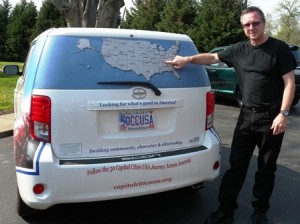 Linda Burton posting from Nashville, Tennessee – “The thing I love about Nashville is that it’s a big city that feels like a small town.” I heard that statement three times in a row today, from people of different ages in different settings. The same exact words! “A big city that feels like a small town.” I asked each one to explain what they meant. “People are friendly,” was one answer. “Everybody takes care of each other.” “It’s just a bunch of good neighborhoods.” “People here have no pretenses.” Dendy, who’s in the music business, talked about the rich and famous who call Nashville home. “They like to spend time here because they can walk around and rub elbows with everybody else with no hassle.” Martha, who travels the south in her marketing job, talked about the friendliness here. “I’d choose Nashville over any other city,” she said. “It’s pretty, and there are a million things to do. We’ve got good music and we’ve got good churches and we’ve got really good food. I always feel good when I get close to Nashville.” I interrupted Martha at that point. “I felt terror,” I threw in. “The traffic!” “Well,
Linda Burton posting from Nashville, Tennessee – “The thing I love about Nashville is that it’s a big city that feels like a small town.” I heard that statement three times in a row today, from people of different ages in different settings. The same exact words! “A big city that feels like a small town.” I asked each one to explain what they meant. “People are friendly,” was one answer. “Everybody takes care of each other.” “It’s just a bunch of good neighborhoods.” “People here have no pretenses.” Dendy, who’s in the music business, talked about the rich and famous who call Nashville home. “They like to spend time here because they can walk around and rub elbows with everybody else with no hassle.” Martha, who travels the south in her marketing job, talked about the friendliness here. “I’d choose Nashville over any other city,” she said. “It’s pretty, and there are a million things to do. We’ve got good music and we’ve got good churches and we’ve got really good food. I always feel good when I get close to Nashville.” I interrupted Martha at that point. “I felt terror,” I threw in. “The traffic!” “Well,  yes, there is a lot of traffic,” she conceded, “and the streets can be confusing until you learn your way around.” I’ll say! Street names change at almost every turn; this road goes there and that road turns this way. There are freeways and parkways and boulevards and pikes. A lot of pikes, for a lot of cars, for a lot of people. Nashville’s population is 601,222 (US 2010 Census) and it’s the 6th largest capital city – just a tad smaller than Boston and a tad larger than Denver. My challenge is to untangle the mystery: why does big-city Nashville feel so small-town sweet? » read more
yes, there is a lot of traffic,” she conceded, “and the streets can be confusing until you learn your way around.” I’ll say! Street names change at almost every turn; this road goes there and that road turns this way. There are freeways and parkways and boulevards and pikes. A lot of pikes, for a lot of cars, for a lot of people. Nashville’s population is 601,222 (US 2010 Census) and it’s the 6th largest capital city – just a tad smaller than Boston and a tad larger than Denver. My challenge is to untangle the mystery: why does big-city Nashville feel so small-town sweet? » read more
» posted on Monday, April 15th, 2013 by Linda Lou Burton
Stockton’s Valley
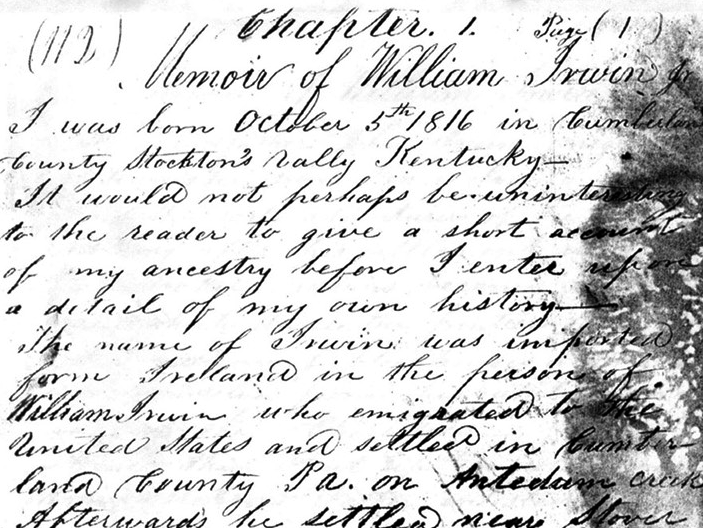 Linda Burton posting from Nashville, Tennessee – I was born October 5 1816 in Cumberland County Stockton’s Valley Kentucky. That is the beginning line in the Journal of William Irwin Jr, my 3rd-great-grandfather. My path today, as I headed south from Frankfort to Nashville, would lead me through Stockton’s Valley. For weeks I’ve been following the trail of Daniel Boone and the pioneers who moved westward into Kentucky; now this is my day to get personal with history. William is my relative and my pioneer; and best of all William kept a Journal; he left behind a written picture of his life and times. My brother discovered William’s Journal just a few years back; the original is in possession of a distant cousin in Oregon, who kindly sent us copies. William died of cholera in 1849 as he and his family headed for the new state of Texas; he is buried by the trail in Arkansas, alongside his father William, and three of his children, a heartwrenching story as are so many stories of this
Linda Burton posting from Nashville, Tennessee – I was born October 5 1816 in Cumberland County Stockton’s Valley Kentucky. That is the beginning line in the Journal of William Irwin Jr, my 3rd-great-grandfather. My path today, as I headed south from Frankfort to Nashville, would lead me through Stockton’s Valley. For weeks I’ve been following the trail of Daniel Boone and the pioneers who moved westward into Kentucky; now this is my day to get personal with history. William is my relative and my pioneer; and best of all William kept a Journal; he left behind a written picture of his life and times. My brother discovered William’s Journal just a few years back; the original is in possession of a distant cousin in Oregon, who kindly sent us copies. William died of cholera in 1849 as he and his family headed for the new state of Texas; he is buried by the trail in Arkansas, alongside his father William, and three of his children, a heartwrenching story as are so many stories of this 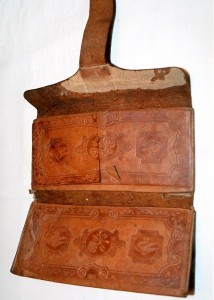 country’s settlement. The Journal was preserved in a handsome leather pouch; an amazing tale for us to read today. The first page continues: The name of Irwin was imported from Ireland in the person of William Irwin who emigrated to the United States and settled in Cumberland County Pa on Antedum Creek. He had three sons, James, Robert & John. The latter of whom was my grandfather who married a woman of Welsh descent by the name of Elizabeth Cunningham.…grandfather… was a soldier in the revolutionary war….Grandfather had three sons…my father William, Francis, and John. Francis married but had no heirs and died in Cotton Gin Miss. John settled in Cumberland Cty Ky and had a large family of children.
country’s settlement. The Journal was preserved in a handsome leather pouch; an amazing tale for us to read today. The first page continues: The name of Irwin was imported from Ireland in the person of William Irwin who emigrated to the United States and settled in Cumberland County Pa on Antedum Creek. He had three sons, James, Robert & John. The latter of whom was my grandfather who married a woman of Welsh descent by the name of Elizabeth Cunningham.…grandfather… was a soldier in the revolutionary war….Grandfather had three sons…my father William, Francis, and John. Francis married but had no heirs and died in Cotton Gin Miss. John settled in Cumberland Cty Ky and had a large family of children.
It is John’s grave I’m looking for today; the target is Albany Cemetery. » read more
» posted on Wednesday, April 10th, 2013 by Linda Lou Burton
Seeing Red
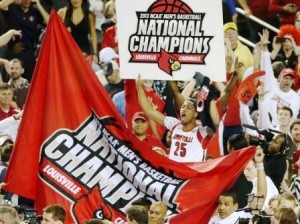 Linda Burton posting from Frankfort, Kentucky – They must eat a lot of Wheaties in Louisville, Kentucky. At least that’s what I thought, as I watched a raving waving sea of cheering red on TV tonight. Louisville is almost 50 miles west of Frankfort, but I can hear the noise clear over here. What’s going on? The University of Louisville Cardinals men’s basketball team came home from Atlanta yesterday with an 82-76 win over Michigan, that’s what, making them the NCAA National Champions for 2013. And what’s more, the Lady Cards just returned from New Orleans with a women’s second place; yes, well, those UConn Huskies pulled it out again. So who’s crying? Nobody! It’s a celebration of what can happen when you “go for it,” and from
Linda Burton posting from Frankfort, Kentucky – They must eat a lot of Wheaties in Louisville, Kentucky. At least that’s what I thought, as I watched a raving waving sea of cheering red on TV tonight. Louisville is almost 50 miles west of Frankfort, but I can hear the noise clear over here. What’s going on? The University of Louisville Cardinals men’s basketball team came home from Atlanta yesterday with an 82-76 win over Michigan, that’s what, making them the NCAA National Champions for 2013. And what’s more, the Lady Cards just returned from New Orleans with a women’s second place; yes, well, those UConn Huskies pulled it out again. So who’s crying? Nobody! It’s a celebration of what can happen when you “go for it,” and from 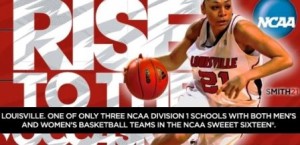 what I learn that seems to be the norm at U of L. Since the year 2000 the Cardinals have gone to basketball’s Final Four three times and the Lady Cards twice; as to football, U of L claims an Orange Bowl win in 2007 and a Sugar Bowl in 2013; the guys have gone to the College Baseball World Series and won the National Soccer Championship in 2010. The gals have three Big East Tournament championships for volleyball and four Big East titles for track and field. All in all, there are 13 women’s and 10 men’s teams that participate in the Big East Conference (though they’ll be switching to the
what I learn that seems to be the norm at U of L. Since the year 2000 the Cardinals have gone to basketball’s Final Four three times and the Lady Cards twice; as to football, U of L claims an Orange Bowl win in 2007 and a Sugar Bowl in 2013; the guys have gone to the College Baseball World Series and won the National Soccer Championship in 2010. The gals have three Big East Tournament championships for volleyball and four Big East titles for track and field. All in all, there are 13 women’s and 10 men’s teams that participate in the Big East Conference (though they’ll be switching to the  Atlantic Coast Conference in 2014). The men’s basketball program is the most profitable NCAA program in the country; it ranks 5th in NCAA Tournament wins and 5th in annual attendance; the women’s basketball team broke the Big East paid attendance records in 2008 when they defeated U of Kentucky at Freedom Hall. But sports doesn’t get all the recognition at U of L. » read more
Atlantic Coast Conference in 2014). The men’s basketball program is the most profitable NCAA program in the country; it ranks 5th in NCAA Tournament wins and 5th in annual attendance; the women’s basketball team broke the Big East paid attendance records in 2008 when they defeated U of Kentucky at Freedom Hall. But sports doesn’t get all the recognition at U of L. » read more
» posted on Monday, April 8th, 2013 by Linda Lou Burton
An April Afternoon
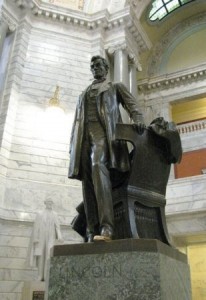 Linda Burton posting from Frankfort, Kentucky – Where can you find statues honoring Abraham Lincoln and Jefferson Davis in the same room? The answer is the rotunda of the state capitol in Frankfort, Kentucky. The bronze statue of Abraham Lincoln stands 14 feet high; his hand rests on a chair; the toe of his shoe, which protrudes slightly from the marble base, is worn to a shine from the hands of admiring passersby. The Lincoln statue occupies the center of the rotunda; just beyond his right shoulder, against the towering marble wall, stands the statue of Jefferson Davis; not nearly so grand in scale or position, yet in keeping with statues of others honored in the space
Linda Burton posting from Frankfort, Kentucky – Where can you find statues honoring Abraham Lincoln and Jefferson Davis in the same room? The answer is the rotunda of the state capitol in Frankfort, Kentucky. The bronze statue of Abraham Lincoln stands 14 feet high; his hand rests on a chair; the toe of his shoe, which protrudes slightly from the marble base, is worn to a shine from the hands of admiring passersby. The Lincoln statue occupies the center of the rotunda; just beyond his right shoulder, against the towering marble wall, stands the statue of Jefferson Davis; not nearly so grand in scale or position, yet in keeping with statues of others honored in the space  that welcomes all to the Kentucky capitol. “Kentucky played a pivotal role in the Civil War,” I read in the brochure I’d picked up at the front desk. “Both the President of the Confederacy, Jefferson Davis (1808-1889), and Union President Abraham Lincoln (1809-1865) were born in Kentucky. The war that pitted state against state and brother against brother was perhaps best represented in Kentucky as portions of the state
that welcomes all to the Kentucky capitol. “Kentucky played a pivotal role in the Civil War,” I read in the brochure I’d picked up at the front desk. “Both the President of the Confederacy, Jefferson Davis (1808-1889), and Union President Abraham Lincoln (1809-1865) were born in Kentucky. The war that pitted state against state and brother against brother was perhaps best represented in Kentucky as portions of the state  supported the efforts of the Confederacy while others supported the efforts of the Union.” (Kentucky was a “border state” during the war; one of four slave states that never seceded; Delaware, Maryland and Missouri were the others). I leaned against the wall to get my bearings and noticed a young boy by the Lincoln statue, hand resting on top of the pedestal. Was he part of a school group? “I’ll bet he just rubbed the toe for luck,” I smiled, as I began to study the brochure. There were three floors to explore, housing all three branches of Kentucky state government. I stared at the opulence above my head; it made me think of France. » read more
supported the efforts of the Confederacy while others supported the efforts of the Union.” (Kentucky was a “border state” during the war; one of four slave states that never seceded; Delaware, Maryland and Missouri were the others). I leaned against the wall to get my bearings and noticed a young boy by the Lincoln statue, hand resting on top of the pedestal. Was he part of a school group? “I’ll bet he just rubbed the toe for luck,” I smiled, as I began to study the brochure. There were three floors to explore, housing all three branches of Kentucky state government. I stared at the opulence above my head; it made me think of France. » read more
» posted on Friday, April 5th, 2013 by Linda Lou Burton
Liquid Corn
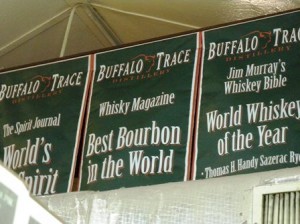 Linda Burton posting from Frankfort, Kentucky – “It was used for medicinal purposes,” Fred answered. “It’s been said there were more sick people in Kentucky during prohibition years than at any other period of time.” This brought a laugh from the group; twenty people gathered for the beginning of a tour of Buffalo Trace, a Frankfort bourbon distillery that’s been in business over 200 years. Fred had told us it was a continuous operation “even during Prohibition,” so of course I asked how they got permission from the federal government to stay open. “The doctor wrote out a prescription and you dropped by to pick up your pint,” he continued. Ah, so people were after its “curative” properties! Bourbon whiskey is, by definition, mostly corn, Fred
Linda Burton posting from Frankfort, Kentucky – “It was used for medicinal purposes,” Fred answered. “It’s been said there were more sick people in Kentucky during prohibition years than at any other period of time.” This brought a laugh from the group; twenty people gathered for the beginning of a tour of Buffalo Trace, a Frankfort bourbon distillery that’s been in business over 200 years. Fred had told us it was a continuous operation “even during Prohibition,” so of course I asked how they got permission from the federal government to stay open. “The doctor wrote out a prescription and you dropped by to pick up your pint,” he continued. Ah, so people were after its “curative” properties! Bourbon whiskey is, by definition, mostly corn, Fred 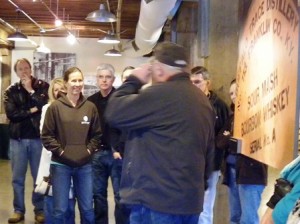 continued, and I visualized the rows of corn my Granddad planted; his cornfield stretched all the way from the house to the railroad track. “Don’t put the water on to boil till you head out the door to pick the corn,” Granddad would say, when corn-on-the-cob season finally arrived; he believed it had to be that fresh to be good. So I grew up with corn, the juiciest, sweetest, most delicious vegetable God ever created. And easy to grow. That’s why American pioneers (British-French-German-Irish-Scottish-Welch) planted it as they moved westward across the Alleghenies after the Revolutionary War, into
continued, and I visualized the rows of corn my Granddad planted; his cornfield stretched all the way from the house to the railroad track. “Don’t put the water on to boil till you head out the door to pick the corn,” Granddad would say, when corn-on-the-cob season finally arrived; he believed it had to be that fresh to be good. So I grew up with corn, the juiciest, sweetest, most delicious vegetable God ever created. And easy to grow. That’s why American pioneers (British-French-German-Irish-Scottish-Welch) planted it as they moved westward across the Alleghenies after the Revolutionary War, into 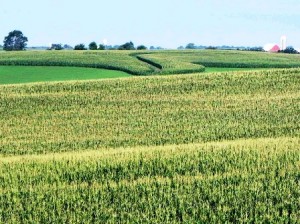 the vast open farmlands that eventually became Kentucky. The soil was rich, the sun was warm, and the corn grew. Now think about it – how much corn can you eat, or feed to your animals, and then, how much corn can you sell? Roads were bad back then; shipping was costly, and timing was a factor. Turn it into a liquid; that was the profitable answer. And so bourbon whiskey was born. » read more
the vast open farmlands that eventually became Kentucky. The soil was rich, the sun was warm, and the corn grew. Now think about it – how much corn can you eat, or feed to your animals, and then, how much corn can you sell? Roads were bad back then; shipping was costly, and timing was a factor. Turn it into a liquid; that was the profitable answer. And so bourbon whiskey was born. » read more
» posted on Thursday, April 4th, 2013 by Linda Lou Burton
It’s All In Stock
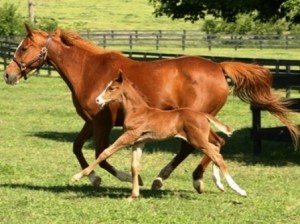 Linda Burton posting from Frankfort, Kentucky – “It’s all in stock.” That’s what my grandma used to say when viewing a newborn. If the baby was especially fine-looking, she’d add “Good stock,” and ooo and coo and ask to hold the little one. A really ugly baby had no such luck with Grandma, she’d simply hand a baby gift to the new mama with best wishes. In the car later, she’d express her concern for the baby’s future. “Poor thing, hasn’t got a chance,” she’d fret. “But it can’t help it, it doesn’t come from good stock.” Believing everyone deserves a chance, I’d chastise Grandma, but I never changed her mind. Grandma’s been dead for 30 years, but I swear, she was tapping my shoulder today, saying “I told you so.” I was standing in a horse barn, and Oscar
Linda Burton posting from Frankfort, Kentucky – “It’s all in stock.” That’s what my grandma used to say when viewing a newborn. If the baby was especially fine-looking, she’d add “Good stock,” and ooo and coo and ask to hold the little one. A really ugly baby had no such luck with Grandma, she’d simply hand a baby gift to the new mama with best wishes. In the car later, she’d express her concern for the baby’s future. “Poor thing, hasn’t got a chance,” she’d fret. “But it can’t help it, it doesn’t come from good stock.” Believing everyone deserves a chance, I’d chastise Grandma, but I never changed her mind. Grandma’s been dead for 30 years, but I swear, she was tapping my shoulder today, saying “I told you so.” I was standing in a horse barn, and Oscar 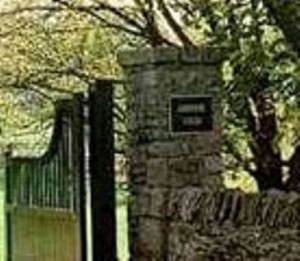 was explaining to the five of us the specific details of horse breeding. What is the definition of a thoroughbred horse? I’d never thought to ask before, but here I am, on my 74th birthday, touring a Kentucky horse farm, and that’s just the first new thing I learned today. A thoroughbred horse comes to life, ah, shall we say, naturally; no artifical processes involved. The tourbus had brought us to Airdrie Stud, 2,500 acres of gently rolling, limestone-rich bluegrass land on Old Frankfort Pike, owned by former Kentucky governor Brereton Jones since 1972; where more than 140
was explaining to the five of us the specific details of horse breeding. What is the definition of a thoroughbred horse? I’d never thought to ask before, but here I am, on my 74th birthday, touring a Kentucky horse farm, and that’s just the first new thing I learned today. A thoroughbred horse comes to life, ah, shall we say, naturally; no artifical processes involved. The tourbus had brought us to Airdrie Stud, 2,500 acres of gently rolling, limestone-rich bluegrass land on Old Frankfort Pike, owned by former Kentucky governor Brereton Jones since 1972; where more than 140  stakes winners and earners of over $80,000,000 have been bred. It’s really cold for April; the grass hasn’t greened up yet; a chilling breeze swept through the barn, but the horses were steaming from their morning bath. These horses are hot all right; Oscar pointed to the chart on the wall; it’s the “appointment schedule” for the day. Three studs had an 8 AM mating; next call is 2 PM. Oscar explained how it’s done. » read more
stakes winners and earners of over $80,000,000 have been bred. It’s really cold for April; the grass hasn’t greened up yet; a chilling breeze swept through the barn, but the horses were steaming from their morning bath. These horses are hot all right; Oscar pointed to the chart on the wall; it’s the “appointment schedule” for the day. Three studs had an 8 AM mating; next call is 2 PM. Oscar explained how it’s done. » read more
